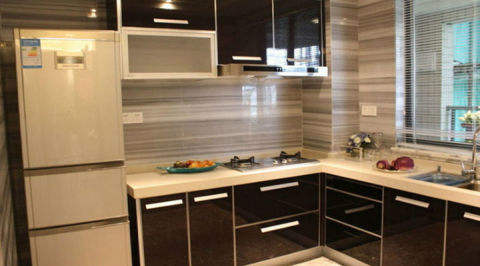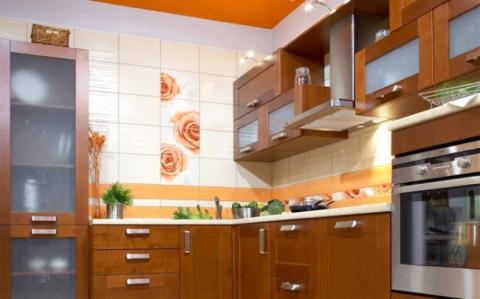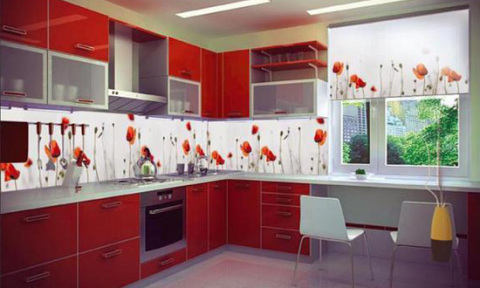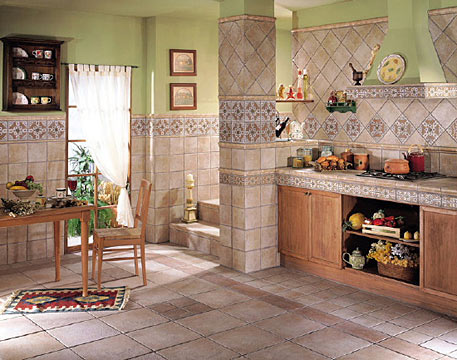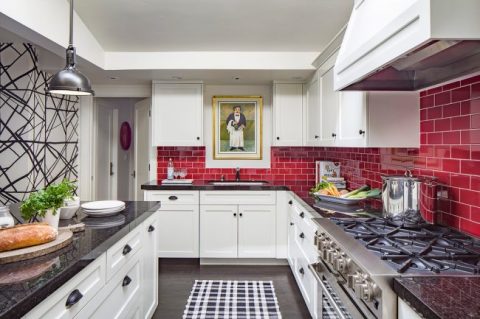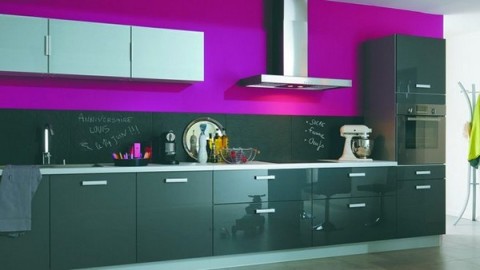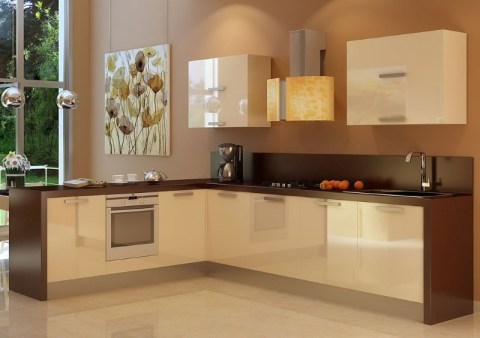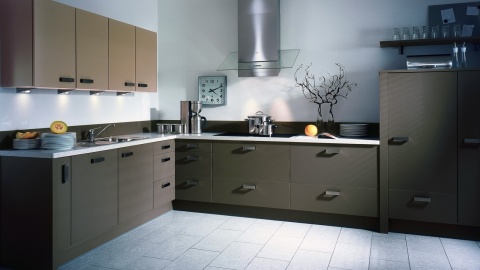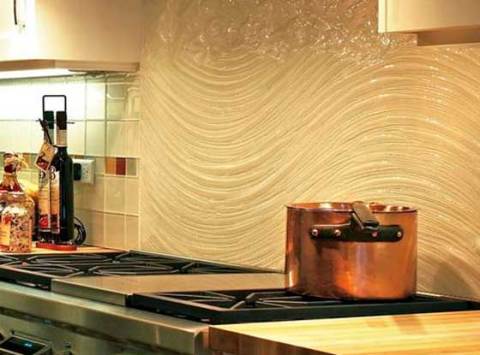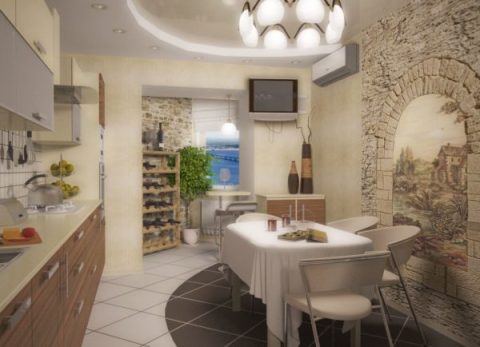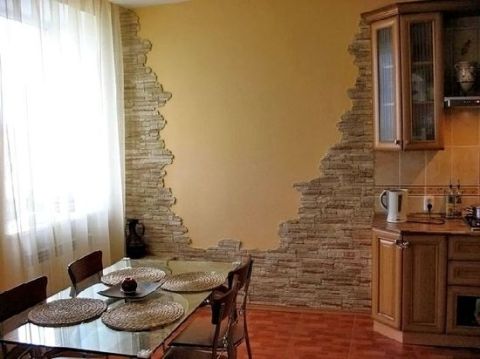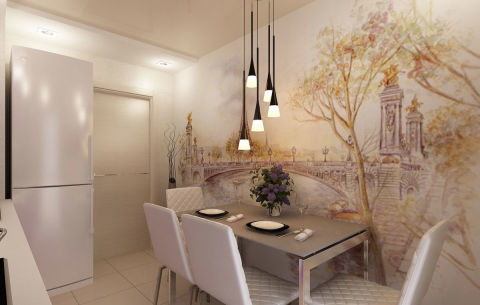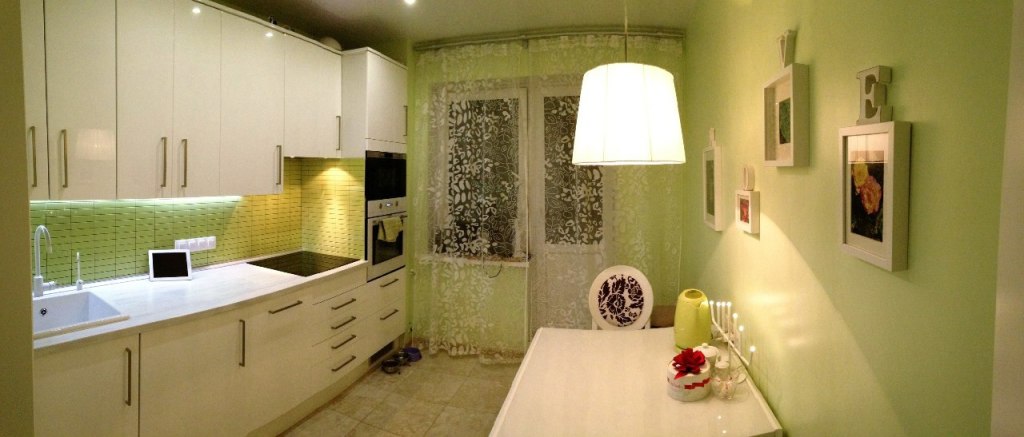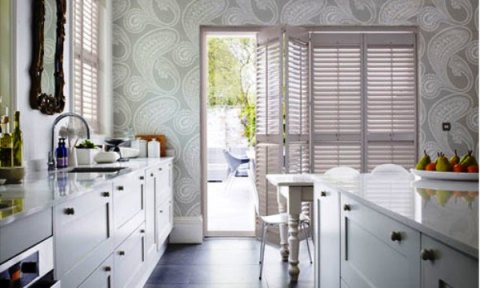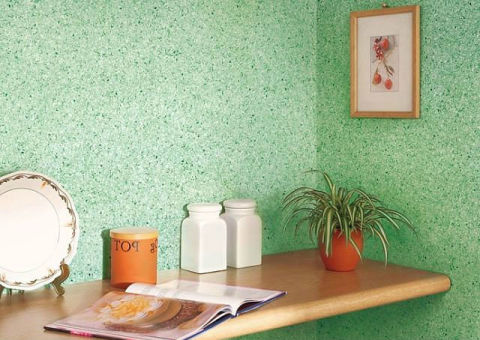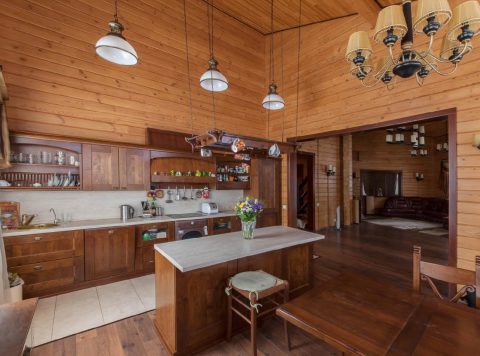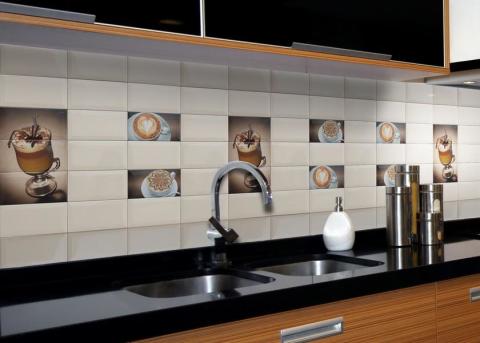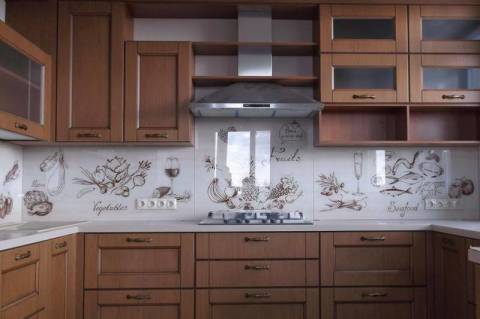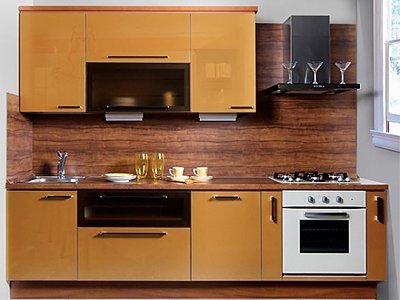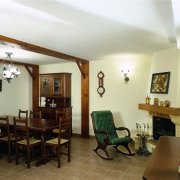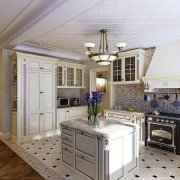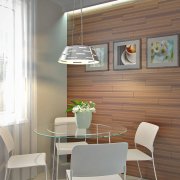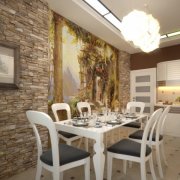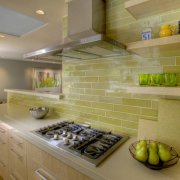How to sheathe walls in the kitchen: materials and design options
Almost every owner has to update the walls in the kitchen. The question itself is not complicated, you just need to choose the right material that will meet the requirements and come up with a design.
After all, everything must be done efficiently and attractively. Today we will look at what kitchen walls can be made of and how to make it attractive.
The content of the article
Methods for wall decoration in the kitchen
Every person who is engaged in the repair of his house or apartment, sooner or later faces the problem of choosing a finishing coating for the walls. If almost any materials can be used for gluing rooms, then the choice of finishing for kitchen walls needs to be approached more responsibly.
The kitchen is a room with high humidity, a large accumulation of steam and fat. So, materials must be selected according to these requirements. Let's look at how to sheathe a wall in a kitchen.
Ceramic tile
Very often, ceramic tiles are used as a finishing material for kitchen walls. Usually she is laid out a surface near the sink or a wall above the working area. The tile is perfect for clearance apron, walls and floor. Sheathe walls in the kitchen today, the most common solution.
- Ceramic coating is characterized by high strength, practicality, a long period of operation, resistance to chemicals and fire safety.
- Today, manufacturers produce many different types of ceramic tiles of various textures. It can be an imitation of fabric, bamboo, wood and metal surface. Often you can find ceramic tiles in the form of panels, mosaics and its other variations.
- Wall decoration with ceramic tiles requires preliminary preparation to obtain a completely flat surface. On this issue there are a lot of articles on our website.
- The price of the material is not large and everything can be done with your own hands.
Let's look at how to update the walls in the kitchen and choose the option of the desired design. If the tile is with a pattern, then it is better to choose not large. Otherwise, the room will be variegated and overly defiant. But this is for small or standard rooms.
If you decide to make the tiles not only walls, but also the floor. Then it’s better to choose one collection for this.
For a large kitchen, bright tiles are suitable. For the small one is not worth it, you ruin the whole design.
When choosing a tile, you must immediately take into account some details, because the material must be of high quality and serve for a long time:
- If the choice fell on the glazed material, then check the glaze for hardness. It is necessary to selectively place the tile at an angle to the lighting and look at the coating. There should be no microcracks;
- When buying, you must take into account waste, there will be at least 10%. Also, if there is a pattern, then make the correct calculations. Indeed, in this case there can be much more waste;
- Pay attention to the base plane. It should not be porous, it is a sign of poor quality raw materials;
Attention: If you have a large coverage area, then take everything from one batch. The seller has a certificate and instructions on this.After all, the same color can have a different shade in different batches.
Paint
Currently, the construction market offers a wide range of paints of various compositions and colors.
When choosing this material should proceed from the following recommendations:
- For the kitchen room, you need to choose a paint that has a high degree of abrasion resistanceto moisture and steam (seePaint for walls in the kitchen: which one to choose).
- With matte paint it is possible to hide small flaws in the surface, but such a coating gets dirty quite quickly. The glossy surface in the kitchen requires significantly less maintenance.
- You can finish the kitchen with acrylics. Such a coating is not afraid of wet cleaning, since acrylic paint creates a film on the treated surface.
- Many shades allow you to realize any ideas of designers, you just need to dilute the white base with a suitable color. By spraying paint on the surface, you can get an unusual dot ornament.
Water-based paint
According to some professional builders, it is very good to use water-based paint for wall decoration in the kitchen.
- Its composition does not contain a solvent, so its use is absolutely safe. The advantages of this coating include a short drying period and the absence of pungent odors.
- The application of water-based paint on the surface is recommended in several layers, while the evaporation of moisture included in its composition occurs quite quickly.
- The paint protects the surface from high humidity in the kitchen. Even after a long period of time, such a coating is not peeled off.
Antimicrobial paint
There are also such construction masters who prefer to finish the kitchen with antimicrobial paints that form a thin bactericidal film on the surface.
- This will prevent the surface from yellowing, which is very important for the kitchen. Another advantage of this coating is the absence of toxic substances.
The bactericidal effect is provided by silver oxide. - Today it is increasingly common to find kitchens where antimicrobial paint is used as a finish, which should be applied with a roller or spray exclusively to a dry and clean surface.
Structural coating
If it seems to you that a smooth surface is boring and mundane, then opt for a structural coating:
Wall coating with structural paint | This paint is distinguished by a thicker composition, its consistency resembles soft plasticine. First, the paint is applied to the wall, after which, using the roller, create the necessary pattern. For structural paints no need to prepare walls in advance, only |
We make the wall structural plaster | Via structural plasters You can hide errors on the wall surface. Now the construction market offers a large selection of plasters, where quartz, granite and marble chips are used as filler.
|
We use decorative plaster in the decoration | Decorative plaster, which has a large number of varieties, is very popular for covering walls.
|
Wallpaper
The use of new technologies in the production of wallpaper allows you to use them to cover the walls in the kitchen. Of course, the basis of the wallpaper should not be paper. The construction market offers many options that are suitable for finishing kitchen walls.
The use of vinyl wallpaper | This type of wallpaper is designed specifically for walls in the kitchen. They are distinguished by high density, smooth surface and a minimum of relief.
|
Coloring the wallpaper in the kitchen | This type of wallpaper is good because it doesn’t need to be pre-prepared for the walls. You just need to slightly level their surface. The dye, steam and moisture are not afraid of the wallpaper. They are flexible and have a high degree of strength. It is recommended to use acrylic paints for painting such wallpapers. |
Variants of wall decoration for kitchen walls | Glass threads are used for the manufacture of such wallpaper. The disadvantages of glass wallpaper are their rather high cost, the use of special glue and difficulties in dismantling. However, this material has more advantages. Such wallpaper is not afraid of mechanical damage, wet cleaning and the use of a brush to clean the surface . |
Apply liquid wallpaper in the decoration of the kitchen | Liquid wallpaper is becoming increasingly popular for wall decoration in the kitchen. They consist of cellulose or cotton fibers, dye and glue. The powder must be diluted as described in the instructions, and then applied to the surface of the wall.
|
Wooden lining
Finishing the kitchen walls with wooden lining creates a favorable atmosphere in the room and is an environmentally friendly material.
- Wooden lining is resistant to temperature extremes, high humidity in the room and to direct sunlight. However, the cost of this type of finish is quite high, so before you buy it, you should carefully consider and calculate everything.
- Linden, alder, pine or oak are well suited for the kitchen. Lining made of cedar cleans the air of harmful bacteria. Spruce wood panels have a very attractive pattern, so they are very much in demand.
- With such a variety of finishing materials, it is very difficult to make the final choice. An excellent solution in this case is a combination of finishing materials. It is possible to sheathe the surface of the walls with lining, and for the working area to use ceramic tiles. In the dining room, decorative plaster or wallpaper is often used. You need to choose finishing material for kitchen walls, taking into account all its features.
Finishing Options
Before you buy a tile, pay attention to how its corrugated surface looks.This is very important, because the quality of fixing the tiles on the wall depends on it. The more corrugations on the tile, the better. The color palette and the variety of tile patterns allow you to choose an option for any interior.
To give the walls a finished look, it is very good to use such decorative elements as a variety of inserts, panels and borders:
- Inserts are square-shaped tiles that can have complex patterns, convex patterns. To finish the kitchen, inserts are often used, which are shelves for spices or hooks for towels.
- Borders are rectangular ceramic parts for decorating walls. They are recommended to be used for framing the upper row or for masonry between the rows. With the help of borders, it is good to zone the kitchen room, for which you need to choose a shade that in shade will match the color of the tile.
- The panel is a ceramic insert, which may consist of one or more tiles with a pattern. It looks great on the wall of the freeze panel, which includes several tiles. They can be placed at your discretion, creating cross-shaped or vertical compositions.
Ways to design an apron
A kitchen apron can be issued in several ways:
Tiled apron | This material has a long service life, it is not afraid of pollution, it is quite simple to clean it. Installation of tiles can be done independently, giving preference to a small tile. |
The use of glass in apron decoration | The glass is very easy to wash away from dirt, it makes it possible to create a unique illumination. The glass apron can be decorated with a photograph or a pattern. Tempered glass is used to make it. There are no seams on the apron, so it is very easy to care for. The minus of the glass apron is that the glass is a fragile material, so you need to carefully install and operate it. |
MDF in the decoration of the kitchen | Such an apron can be easily cleaned of impurities. The color of the apron should be selected based on the color palette of the kitchen furniture. Today on sale you can find MDF panels that simulate various building materials. Since the tile is made of wood, its use is not recommended if the room is located gas stove. |
Than to sheathe walls in the kitchen, you will understand from the above. Carefully work through everything and make a decoration scheme. To do this, you must immediately pick up the overall design. This will help the video in this article and photo.
